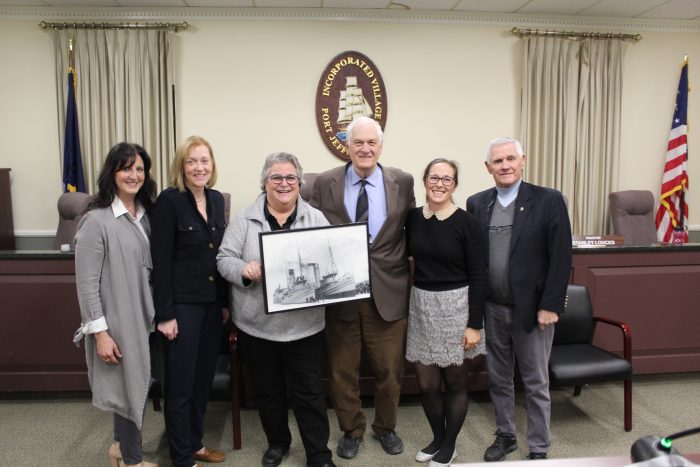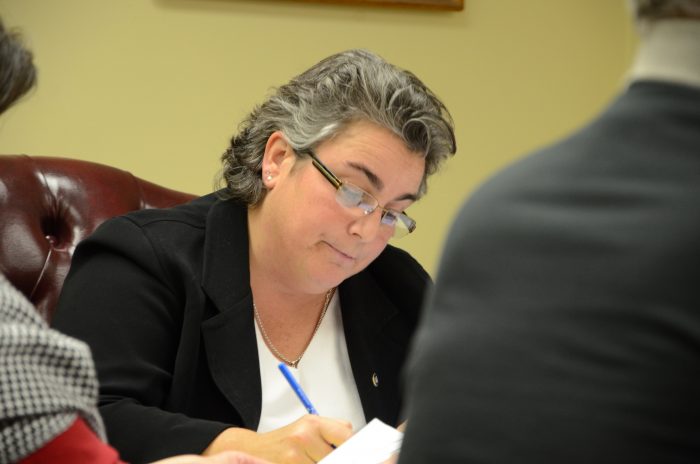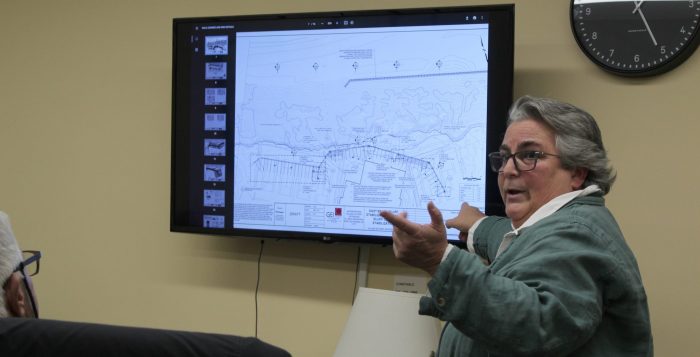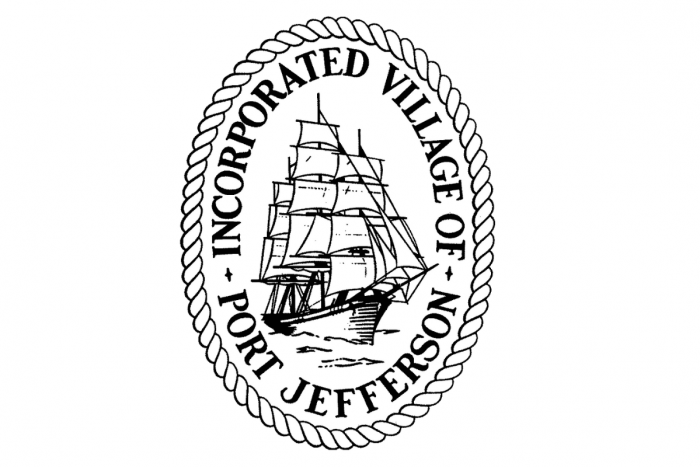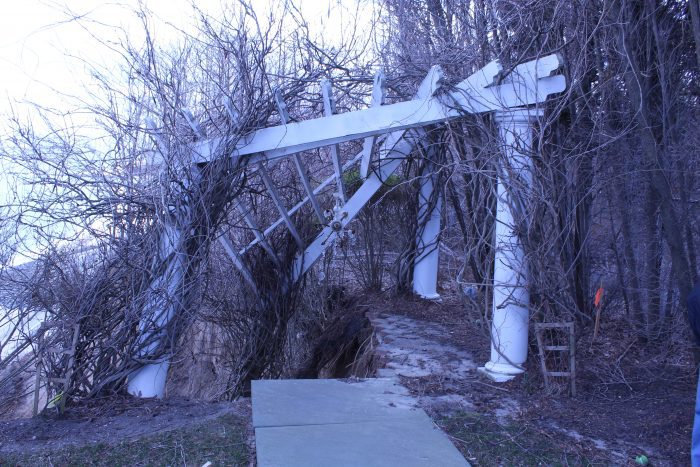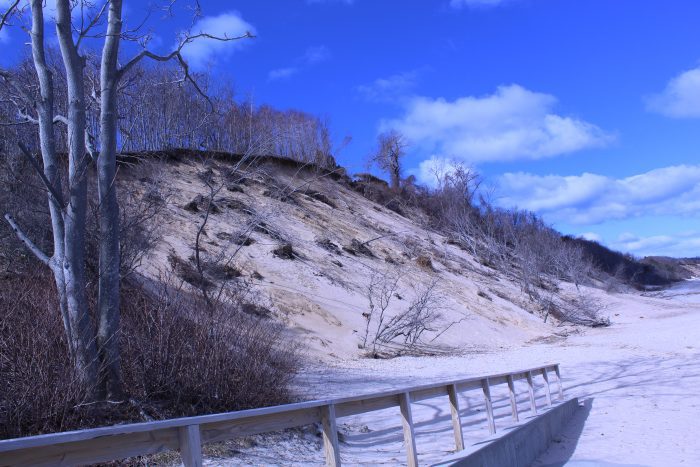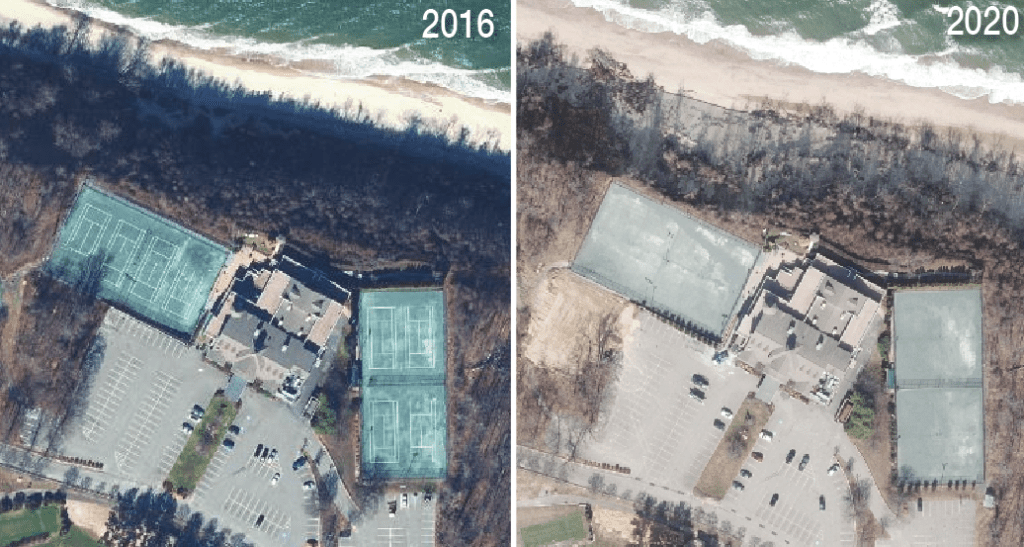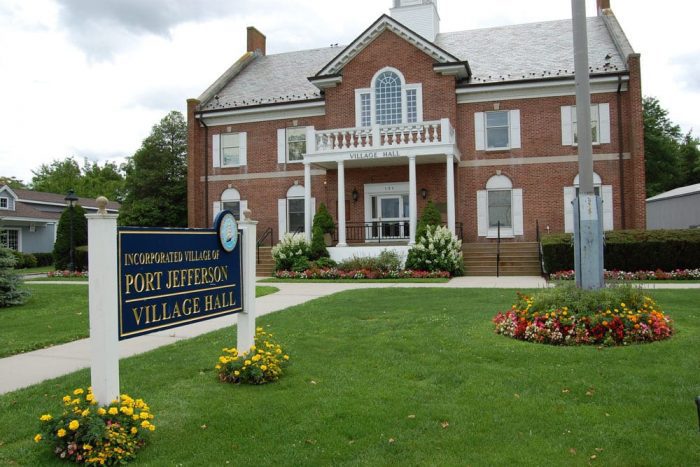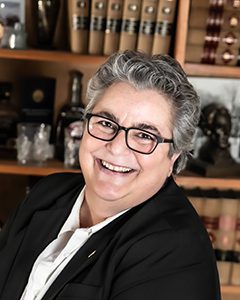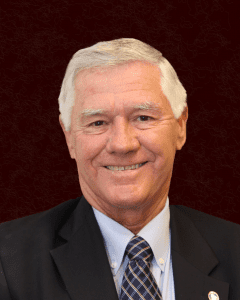The Village of Port Jefferson Board of Trustees met Monday, Feb. 6, with public commendations, updates on East Beach Bluff construction, coastal resilience strategies and parting words.
Recognitions
The village board recognized three code enforcement officers who responded on Dec. 28 to an active shooter incident in Upper Port. Mayor Margot Garant acknowledged code officers Scott Borrero, Emmanuel Kouroupakis and Kevin Toner for their services during a recognition speech.
“I want to thank you in your team efforts for closing off the scene to both vehicular and pedestrian traffic, rendering lifesaving first aid to the victim and keeping all safe until Suffolk County police arrived,” she said.
The board also acknowledged former New York State Assemblyman Steve Englebright (D-Setauket) for his decades of service representing the Port Jefferson community. While she had intended to present Englebright with a plaque, Garant said the village parks department was “so efficient they already secured it on the building” at the Drowned Meadow Cottage Museum.
Instead, she presented the former assemblyman with a picture off the bathroom wall at Village Hall. Accepting this honor, Englebright delivered a brief address, sharing the history of the William Tooker House on Sheep Pasture Road, for which his office worked to secure over $800,000 for historic preservation.
“We have a chance to preserve the legacy that our forebears have brought to us,” he said. “That adventure is just beginning. That house has many more insights to give us as we restore it to useful service.”
He added, “I again say thank you so very, very much to the board. You’re all my heroes, and it’s a great honor to receive the picture off the wall.”
Reports
Mayor Margot Garant offered an update on the ongoing construction at East Beach as part of phase I of the village’s bluff stabilization initiative.
“They’ll be starting some of the upland work, restoring some of the material that we lost at the top of the bluff,” she said. “Then they’re poised to revegetate the entire slope for the spring.”
The mayor added, “It’s an exciting project. I believe in the project, and I’m looking forward to its completion.”
Entering the budget season, Garant said she is also working with each of the departments with the goal of “not trying to spend a lot of money.”
Trustee Stan Loucks updated the public on engineering plans to replace racket facilities at Port Jefferson Country Club. “These plans call for the building of six pickleball courts and three tennis courts,” he said. “This new facility is going to be constructed with a hard surface to allow play for a much longer season.”
He added, “The facility is going to be available to all village residents, as well as some sort of membership. The timetable for construction is totally dependent upon present construction that is going on up there right now.”
Trustee Rebecca Kassay announced an upcoming meeting between the village and officials from U.S. Geological Survey. Coordinated with the assistance of Elizabeth Hornstein, a New York State Sea Grant sustainable and resilient communities specialist for Suffolk County, the meeting will cover the coastal resiliency needs of the village.
“The mayor and I will display how clearly interested we are in climate resilience and in being proactive about these issues,” Kassay said.
Trustee Lauren Sheprow reported on a recent meeting of the Parks and Recreation Advisory Council, stating that one of the priorities that came from the discussions was updating the East Beach and West Beach restroom facilities.
Deputy Mayor Kathianne Snaden reacted to the success of the 4th annual Port Jefferson Ice Festival. [See story, “Thrills and chills in Port Jeff during annual ice fest,” The Port Times Record, Feb. 2, also TBR News Media website.]
“It was toasty warm that day, but it was a fun event, very well attended,” she said. “The ice sculptures were beautiful as always, and fun was had by all.”
Mayor’s upcoming retirement
Near the end of the meeting, Garant announced her retirement as mayor, with her 14-year tenure to end in June. During the public comments period, some residents took the opportunity to thank the outgoing village mayor.‘Your guidance, your instruction and your dedication have gone unmatched and will continue to go unmatched.’
— Kathianne Snaden, to Margot Garant
“As a resident, mayor, thank you,” said Alison LaPointe. “As your friend, I’m so proud of you. Congratulations.”
Kathleen Riley discussed the breadth of Garant’s impact over her seven terms in office. “I don’t think many of the residents know to what extent you have done for this village,” she said.
Loucks said he has “learned an awful lot working with Margot,” adding, “I think the world of her and wish her all the best.”
Snaden recognized Garant’s level of commitment during her time presiding over the Board of Trustees. “Your guidance, your instruction and your dedication have gone unmatched and will continue to go unmatched,” the deputy mayor said. “I appreciate you as our mayor, as the leader of this community for so many years, as my friend.”

